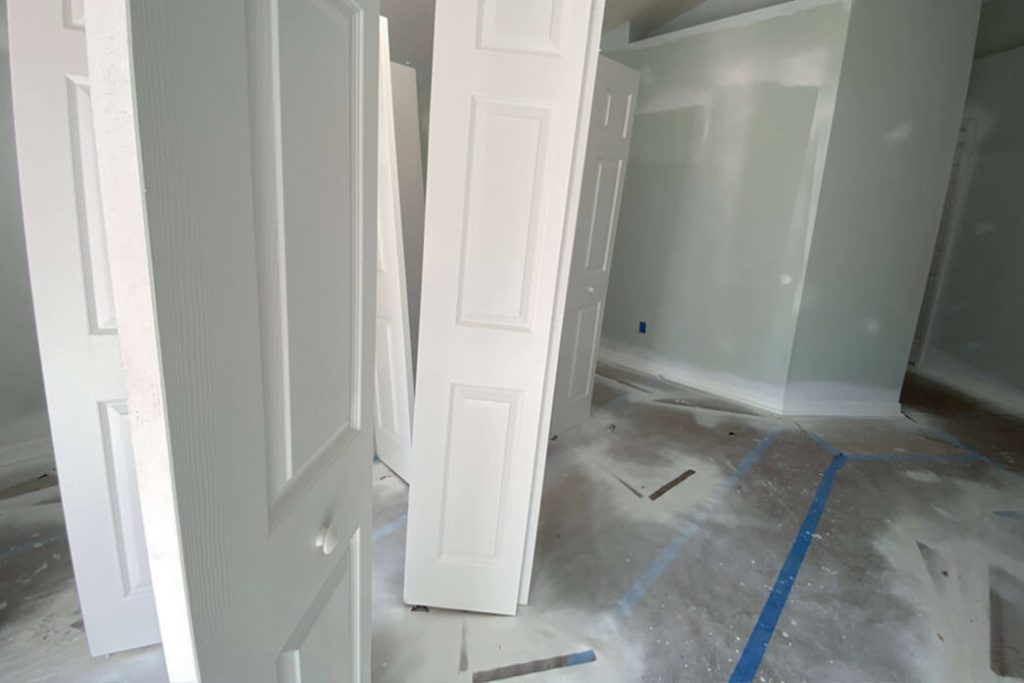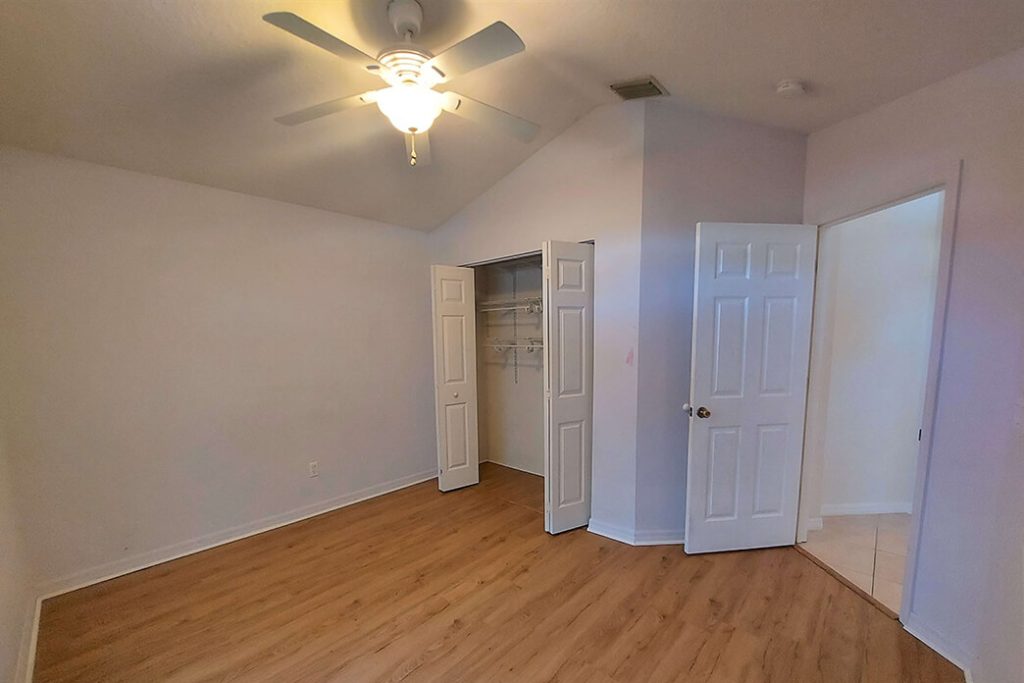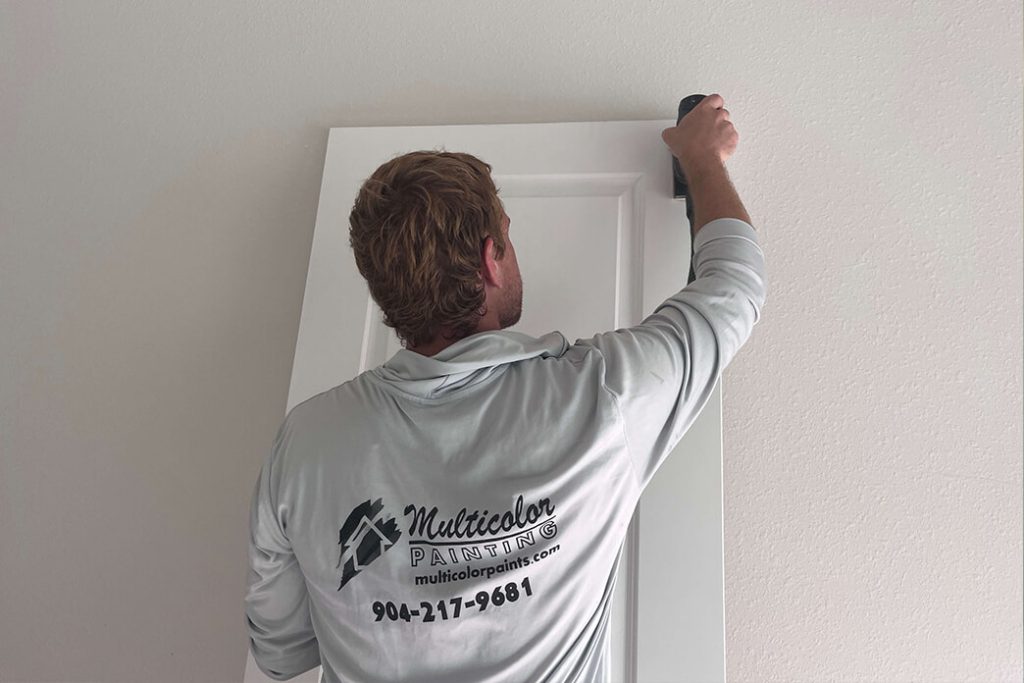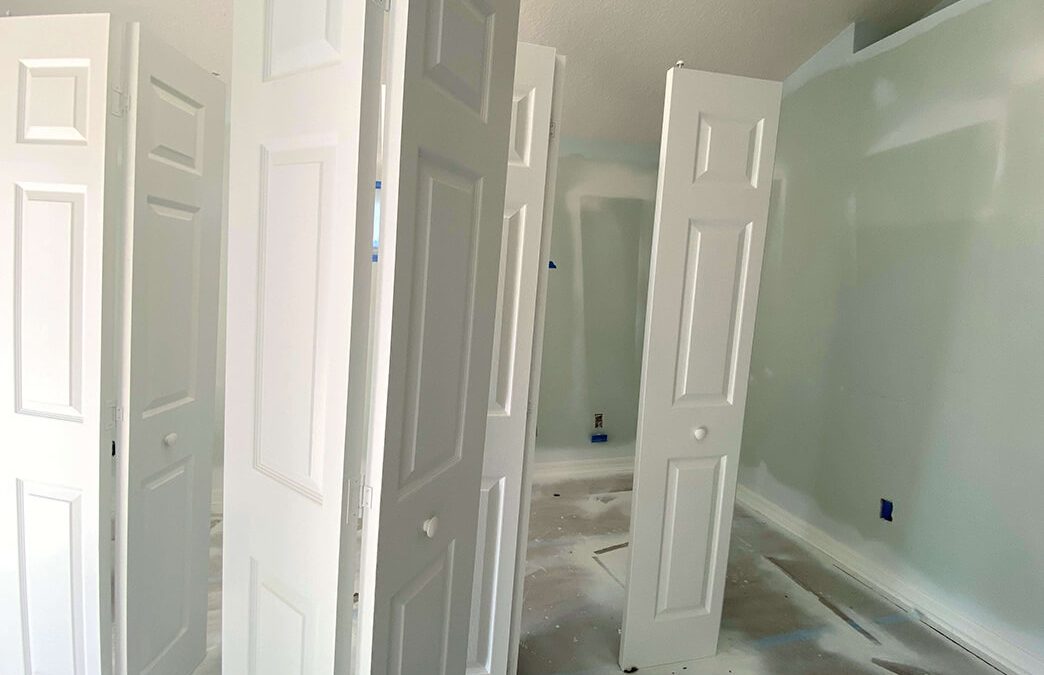Beyond the walls, it’s worth considering the renovation of doors when you decide to refurbish your home. Doors play a crucial role in every household, as every time we move from one room to another, we definitely look at them and either open or close them behind us using the handle. That’s why it’s important for them to be in perfect condition, as they go unnoticed in no way. If you have a new door, it’s also advisable to apply professional surface treatment, as it will make it much more durable. Now, let’s see what options are available for painting interior doors!
What paint to use on interior doors?

If you desire to completely cover the surface of the door, with no visible grain or wood texture, it is recommended to use a topcoat paint for door painting. While it can achieve a beautiful result, this process is typically entrusted to experienced painting professionals, as it is time-consuming and requires a higher level of expertise. The initial layer always involves priming, and sometimes two coats of primer are necessary. Afterward, I recommend applying at least two coats of topcoat paint. Between layers, it’s crucial to sand and then clean the surface.
During future renovations, this thicker layer of paint needs to be sanded because it functions similarly to lacquers, creating a continuous layer on the wood surface. If you wish to repaint it a few years later, you can apply another topcoat paint after sanding.
Painting Interior Wood Doors with Stain

If you are planning to paint a new, untreated interior wood door, the main consideration in choosing paint is that the end result should be pleasing to you.
What do I mean by this? There are various paints suitable for painting wood doors. However, you need to select one that perfectly meets your requirements. Therefore, it’s good to be aware of the properties of the chosen paint.
For example, when painting a wood door, a common desire is for the grain of the wood to be visible after painting. This is understandable because if you already have doors made of wood, you probably don’t want to conceal this feature. In such cases, opt for a water-based, interior wood stain. This option is a safe bet as the painting process is straightforward and can be done DIY, resulting in a beautiful outcome. The drawback of stains is that they don’t cover up any imperfections in the door.
What kind of paint to use on interior metal door?
Metal doors generally withstand more wear and tear, but over the years, they may still experience damage. For instance, a dog might scratch the bottom, or the paint may wear off due to frequent use. The good news is that it’s not necessary to strip off the previous paint from the door, but it’s essential to address any flaws before painting.
Where the surface is damaged, it needs to be leveled with metal filler and sanded smooth. Additionally, it’s advisable to roughen and clean the entire door. Following this, apply a primer coat, and then proceed with painting.
You can use enamel paint or even chalk paint as a topcoat, both of which are available in trendy colors nowadays, offering excellent results. Water-based enamel paint resists yellowing compared to traditional oil-based coatings, creating a hard, durable surface that withstands wear in frequently cleaned and used areas.
How to prep interior door for painting?

The preparation tasks you face depend on the material of the door, the previous paint layers, and the desired end result. Let’s now look at the most common scenarios!
Firstly, remove the door from its place and disassemble the hardware, including the frame and handle. If you are painting multiple doors simultaneously, individually wrap them in plastic bags, labeled to avoid confusion or misplacement of screws later on.
For wooden doors, refreshing without sanding is feasible if you choose a thin stain. In this case, roughening the surface is sufficient. However, when using solvent-based thick stain, sanding is an indispensable preparation step.
Prepare the work area where you’ll be painting! This could be the garage or, if spacious enough, the living room. Use two workbenches. Screw a larger screw halfway into one end of the door and two larger screws halfway into the other end, on both sides, placing it on the workbench so that the door rests on the screws. This allows you to easily rotate the door from one side to the other during the painting process.
If you want your doors to be free of damage or stains but do not want to bother with the proper protection applications yourself, feel free to call a professional painter, to help with your project. 1(904)217-9681 – Peter Hando professional painter in Saint Augustine
I perform a quick on-site survey with my team and give you a personalized quote.
Related blog articles:


